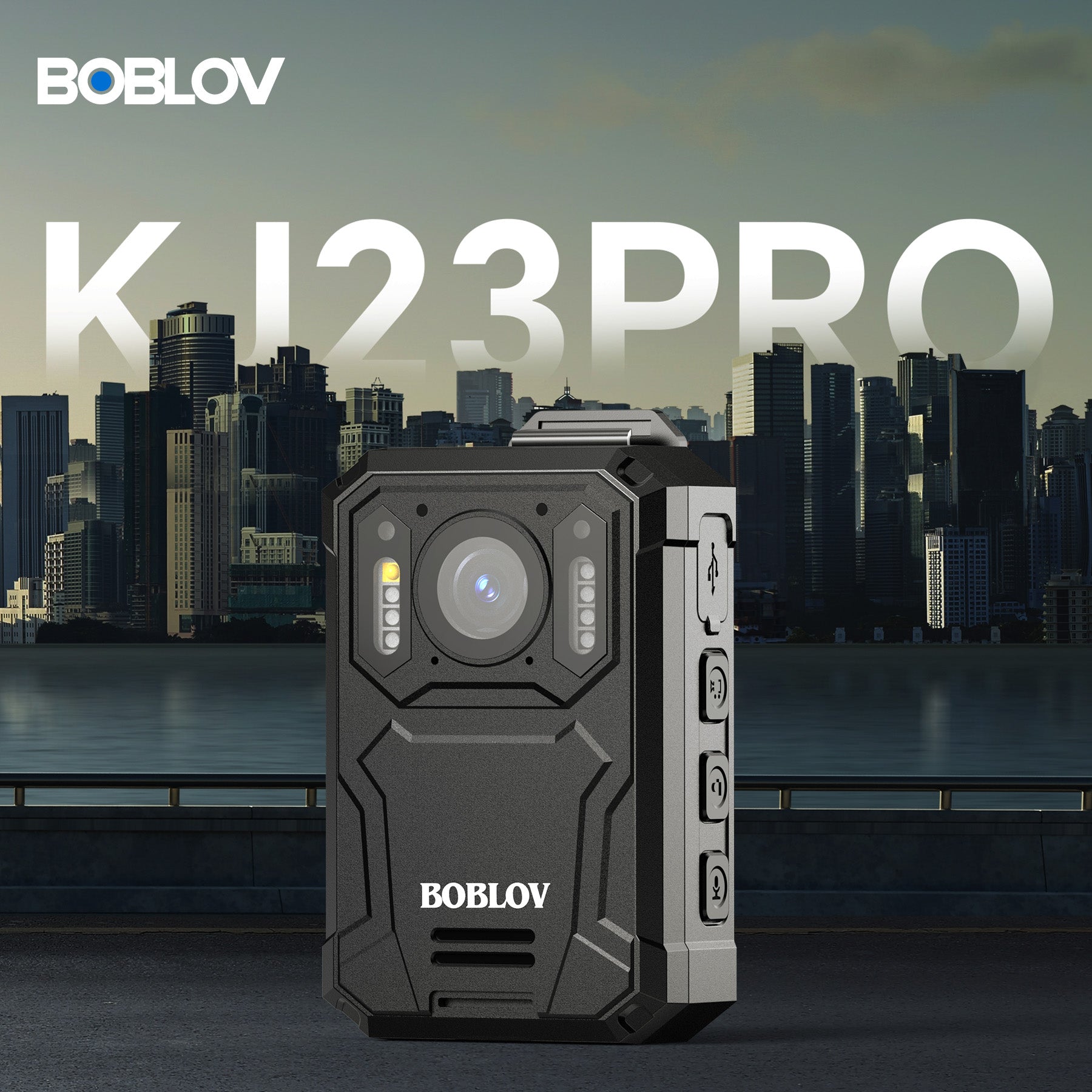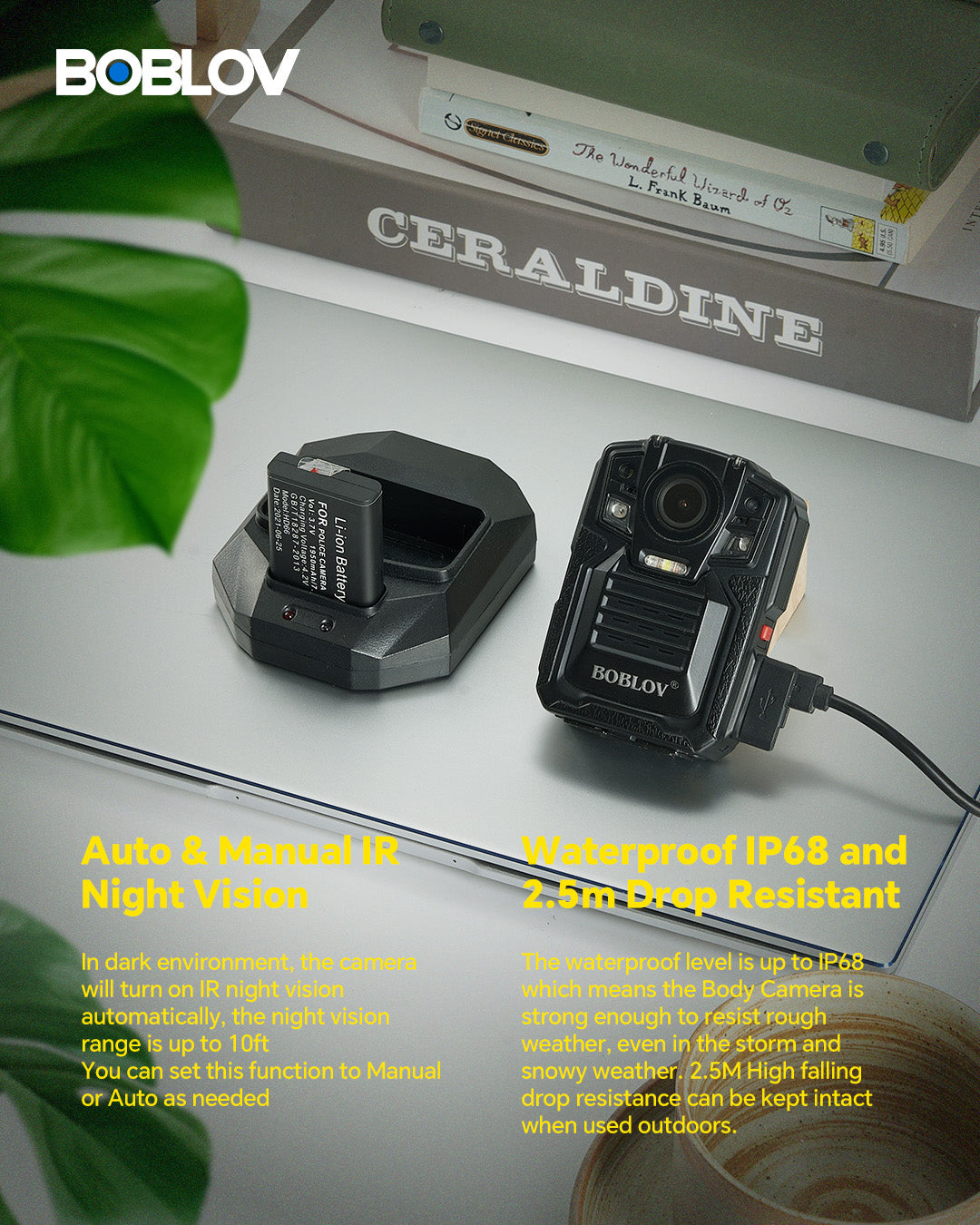Understanding the Importance of Body-Worn Cameras in Law Enforcement
The Evolution of Body-Worn Cameras in the United States
Body-worn cameras have come a long way in the US. They first appeared in the early 2000s. Back then, they were bulky and had poor image quality. Today, they're sleek and high-tech. Boblov has been at the forefront of this evolution.

The use of these cameras has grown rapidly. In 2013, only a few departments used them. By 2016, nearly half of all agencies had them. Now, they're standard in most police forces. This growth shows how important they've become.
Boblov has played a key role in this change. They've made cameras that are easy to use and affordable. This has helped more departments adopt the technology. As a result, Boblov has become a leader in the field.
Legal Implications of Body-Worn Video Evidence
Body-worn cameras have changed how courts view evidence. Video footage is now a powerful tool in legal cases. It can show what really happened during an incident. This has made trials fairer and more accurate.
However, there are also challenges. Privacy concerns have led to new laws. These laws set rules for when cameras can be used. They also control how the footage is stored and shared. Boblov cameras are designed to meet these legal requirements.
The use of body camera footage in court is still evolving. Judges and lawyers are learning how to use it effectively. As this happens, the importance of high-quality cameras like Boblov's will only grow.
Enhancing Accountability and Transparency with Body Cameras
Body cameras have greatly improved police accountability. They record interactions between officers and the public. This helps reduce complaints and resolve disputes. It also helps build trust between police and communities.
Transparency has also increased. Many departments now share footage with the public. This openness helps people understand police work better. It can also help calm tensions after controversial incidents.
Boblov cameras play a big role in this. They're reliable and produce clear footage. This makes them ideal for promoting accountability and transparency. As a result, they're helping to change how police work is done and perceived.
Analyzing the Features of Boblov Body Cameras
Advanced Technology and Image Quality
Boblov cameras are known for their cutting-edge technology. They use high-resolution sensors to capture clear images. Even in low light, the footage is crisp and detailed. This is crucial for law enforcement work.

The cameras also have wide-angle lenses. These can capture more of the scene around the officer. Some models even offer night vision capabilities. This means they can record useful footage at any time of day.
Audio quality is another strong point. Boblov cameras use advanced microphones. These can pick up clear sound even in noisy environments. This is important for understanding what was said during an incident.
Durability and User-Friendly Design
Boblov designs their cameras to withstand tough conditions. They're built to resist impacts, water, and dust. This means they can keep working even in harsh environments. It's a key feature for law enforcement use.
The cameras are also easy to use. They have simple controls that can be operated with one hand. This is important when officers need to react quickly. The cameras can often be turned on with a single motion.
Comfort is another factor in the design. Boblov cameras are lightweight and compact. They can be worn for long shifts without causing discomfort. This encourages officers to use them consistently.
Battery Life and Storage Capabilities
Long battery life is a crucial feature of Boblov cameras. Many models can record for 8 hours or more. This covers a full shift for most officers. Some even have replaceable batteries for extended use.
Storage is also ample. Boblov cameras can hold hours of high-quality video. Many use removable memory cards. This makes it easy to transfer footage or switch to a fresh card if needed.
The cameras also have features to manage storage efficiently. They can overwrite old footage when memory is full. Some models can even upload footage automatically when docked. This helps departments manage large amounts of data.
The Impact of Boblov Cameras on Law Enforcement Agencies
Case Studies: How Boblov Cameras Have Changed the Game
Many police departments have seen positive changes after adopting Boblov cameras. In one city, complaints against officers dropped by 30% in the first year. Officers reported feeling more confident in their actions.

Another department found that the cameras helped resolve disputes quickly. Video evidence often cleared up misunderstandings. This saved time and resources that would have been spent on investigations.
In a rural county, Boblov cameras helped with evidence collection. Officers could capture detailed footage at crime scenes. This led to more successful prosecutions and faster case resolutions.
Integration with Existing Law Enforcement Technology
Boblov cameras work well with other police tech. They can sync with in-car systems and computers. This makes it easy to manage and review footage. Some models even have GPS to tag locations in videos.
The cameras also integrate with evidence management systems. This helps keep video organized and secure. It's easy to find and share relevant footage when needed. This saves time and improves efficiency.
Some departments use Boblov cameras with facial recognition software. This can help identify suspects or missing persons. While this raises privacy concerns, it shows the potential of the technology.
Future Trends in Body-Worn Cameras and the Role of Boblov
The future of body cameras looks bright. We're likely to see even better image quality and longer battery life. Artificial intelligence might help analyze footage automatically. This could flag important events or behavior.
Live streaming could become more common. This would let supervisors see what's happening in real-time. It could help coordinate responses to emergencies. Boblov is working on tech to make this possible.
As laws and policies evolve, cameras will need to adapt. Boblov is staying ahead by working closely with law enforcement. They're developing features to meet new requirements. This ensures their cameras will remain relevant and useful.




